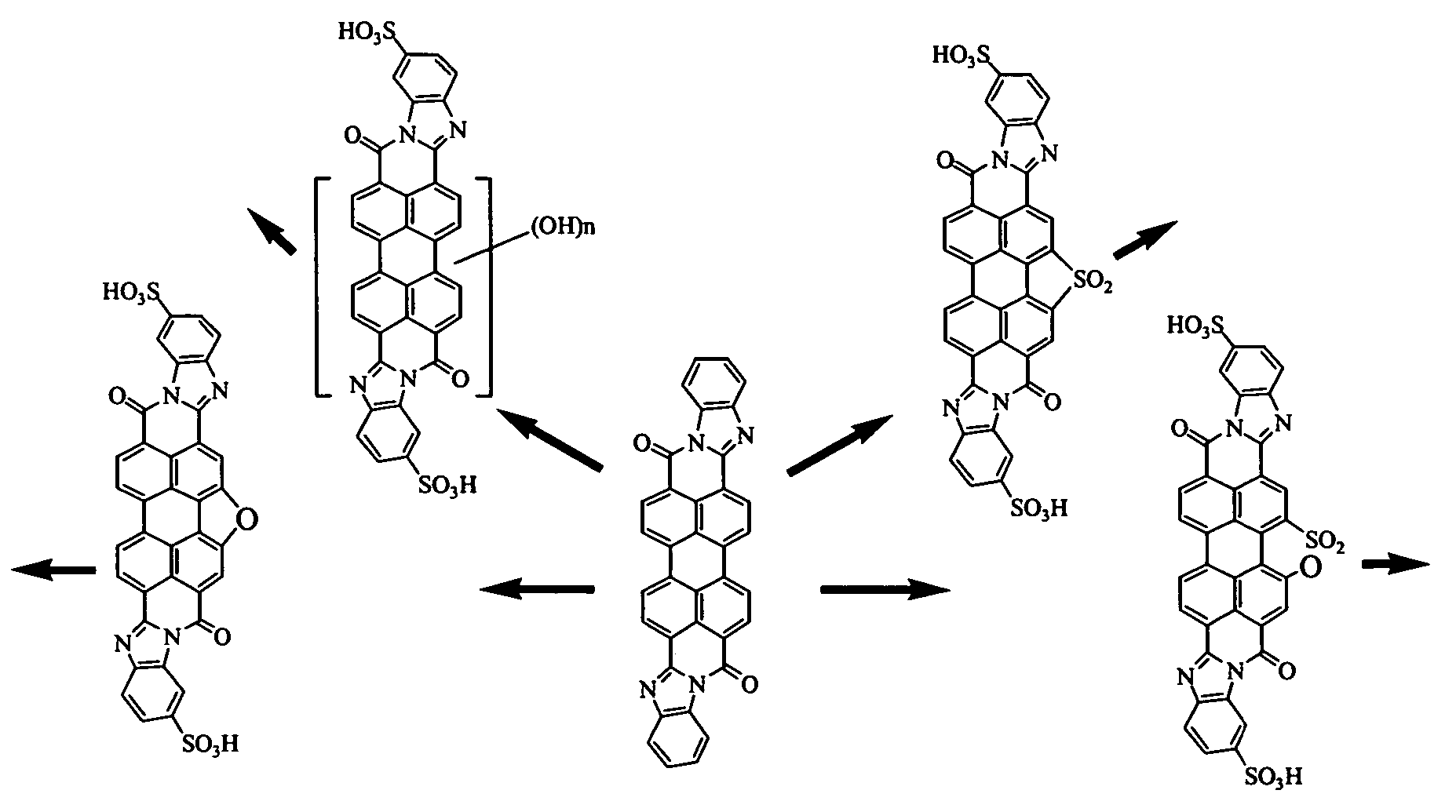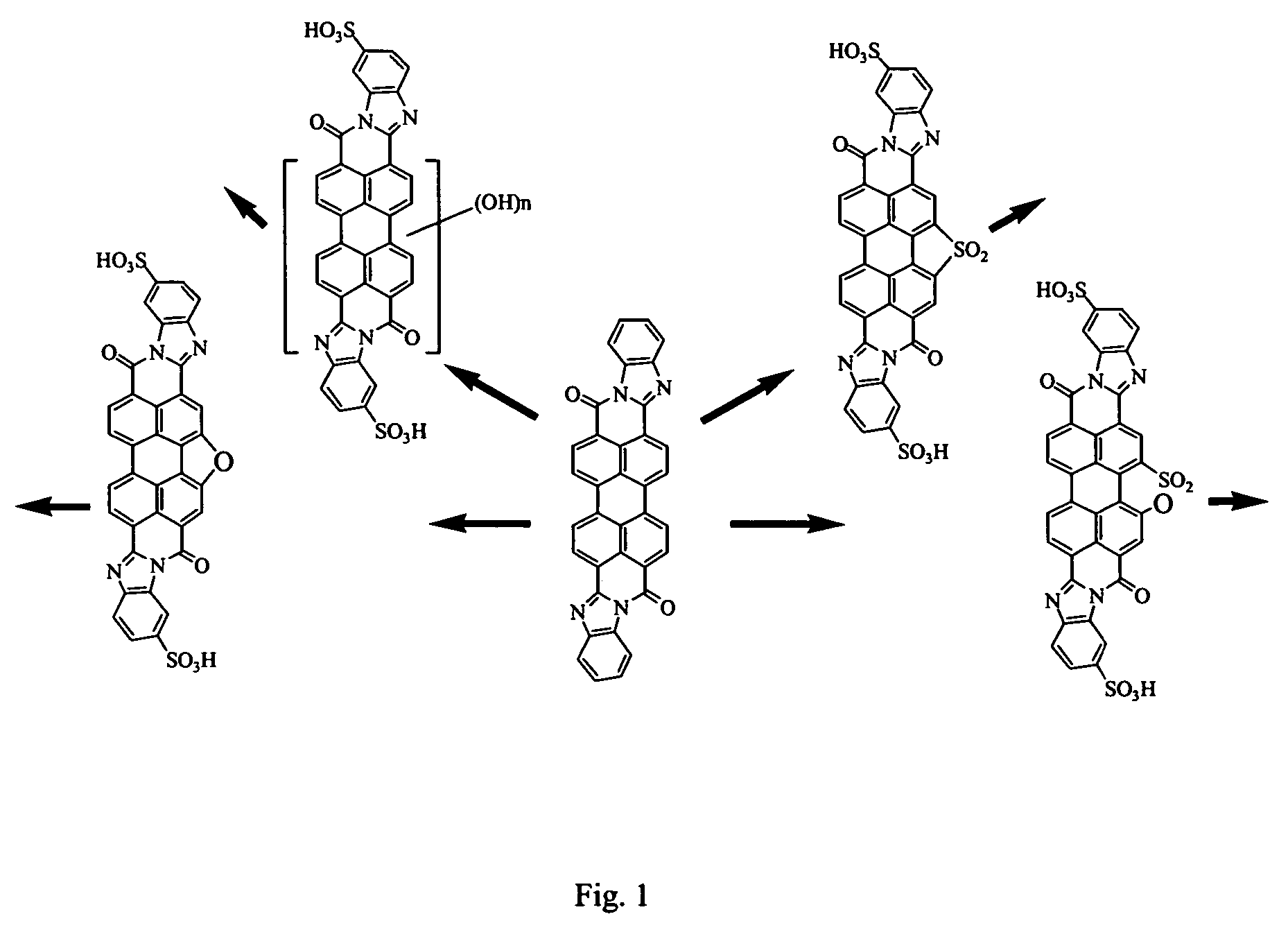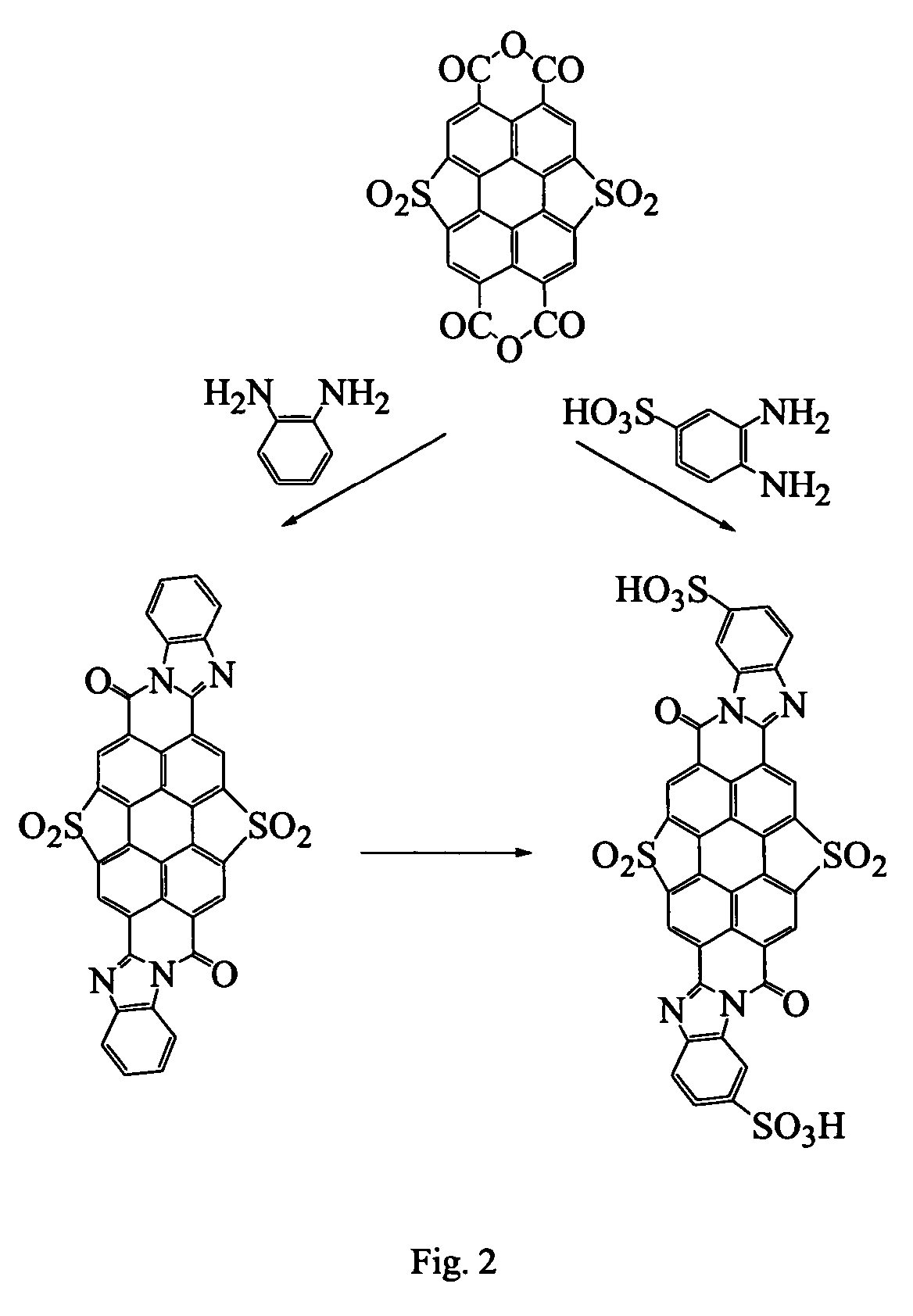Lyotropic liquid crystal systems based on perylenetetracarboxylic acid dibenzimidazole sulfoderivatives, related anisotropic films, and methods for making
a technology of lyotropic liquid crystals and dibenzimidazoles, which is applied in the field of organic chemistry and optical anisotropic coatings, can solve the problems of limiting the application of pva-based films, limiting the number of dyes known to form stable lyotropic mesophases, and limiting the widespread use of lyotropic dyes. , to achieve the effect of increasing the homogeneity of crystallization and drying processes, increasing the yield of films with reprodu
- Summary
- Abstract
- Description
- Claims
- Application Information
AI Technical Summary
Benefits of technology
Problems solved by technology
Method used
Image
Examples
example 1
[0067]Synthesis of a mixture of isomeric disulfonic acids of PTCA DBI sulfones from PTCA sulfone was achieved as follows.
[0068]Stage 1a. Condensation of PTCADA monosulfone with o-phenylenediamine. 40 ml of acetic acid and 1.5 g of o-phenylenediamine were added to a suspension of 2 g of PTCA dianhydride (PTCADA) monosulfone in 50 ml of 4% NaOH solution. The reaction mixture was heated and kept boiled for 5 hours. The formed precipitate was filtration and washed with ethanol. The process yielded 2.1 g of compounds of the following structural formulas.
[0069]
The mass spectrum (VISION 2000) measured molecular ion (negative polarity) was at 598.8 (m / z), and the calculated molecular weight was 598.59.
[0070]Stage 1b. Sulfonation of the product of PTCADA monosulfone condensation with o-phenylenediamine. The product of stage 1a (1.5 g) was sulfonated in 6 ml of 4% oleum for 10 hours at 100° C. The reaction mass was then diluted with 10 ml of water. The precipitate was separated by filtration ...
example 2
[0074]Synthesis of disulfonic acid of trans-PTCA DBI sulfone by sulfonation of trans-PTCA DBI was achieved as follows.
[0075]Trans-PTCA DBI (5.3 g) was introduced by portions into 25 ml of 35% oleum and sulfonated for 8 hours at 90° C. Then the reaction mass was sequentially diluted, first with 92% aqueous sulfuric acid to monohydrate and then with water to a sulfuric acid concentration of 55%. The precipitate was separated by filtration, triply resuspended in acetic acid, and dried to obtain 7.1 g of a compound of the structural formula
[0076]
The mass spectrum (VISION 2000) was the following: molecular ion (negative polarity) of 758.4 m / z, and calculated molecular weight of 758. Elemental analysis measured (%) C, 56.72, 56, 80; H, 1.94; 1.66; N, 7.31, 7.39; S, 12.32, 12.40 for C36H14N4O10S3. Calculated values were (%) C, 56.99; H, 1.86; N, 7.38; O, 21.09; S, 12.68. Infrared spectrum (IR-Fourier spectrometer FSM-1201, film on the windows KRS-5) peaks were located at 1229.4, 1179.7 (su...
example 3
[0077]Synthesis of a mixture of isomeric disulfonic acids of PTCA DBI sultones from PTCA sultones was achieved as follows.
[0078]Stage 3a. Condensation of PTCADA monosultone with o-phenylenediamine. 1.5 g of o-phenylenediamine was added to a suspension of 2 g of PTCADA monosultone in a mixture of 20 ml of acetic acid and 20 ml of DMF. The reaction mass was heated for 2 hours. The formed precipitate was separated by filtration and washed with ethanol. The process yielded 2.4 g of compounds of the following structural formulas
[0079]
[0080]Stage 3b. Sulfonation of the product of PTCADA monosultone condensation with o-phenylenediamine. The product of stage 1a (1 g) was sulfonated in 5 ml of 4% oleum for 8 hours at 100 C. The reaction mass was then diluted with 10 ml of water. The precipitate was separated by filtration and washed with acetic acid. The process yielded 1.1 g of compounds of the following structural formulas
[0081]
[0082]Stage 3c. Condensation of monosultone of PTCADA with o-p...
PUM
 Login to View More
Login to View More Abstract
Description
Claims
Application Information
 Login to View More
Login to View More - R&D
- Intellectual Property
- Life Sciences
- Materials
- Tech Scout
- Unparalleled Data Quality
- Higher Quality Content
- 60% Fewer Hallucinations
Browse by: Latest US Patents, China's latest patents, Technical Efficacy Thesaurus, Application Domain, Technology Topic, Popular Technical Reports.
© 2025 PatSnap. All rights reserved.Legal|Privacy policy|Modern Slavery Act Transparency Statement|Sitemap|About US| Contact US: help@patsnap.com



